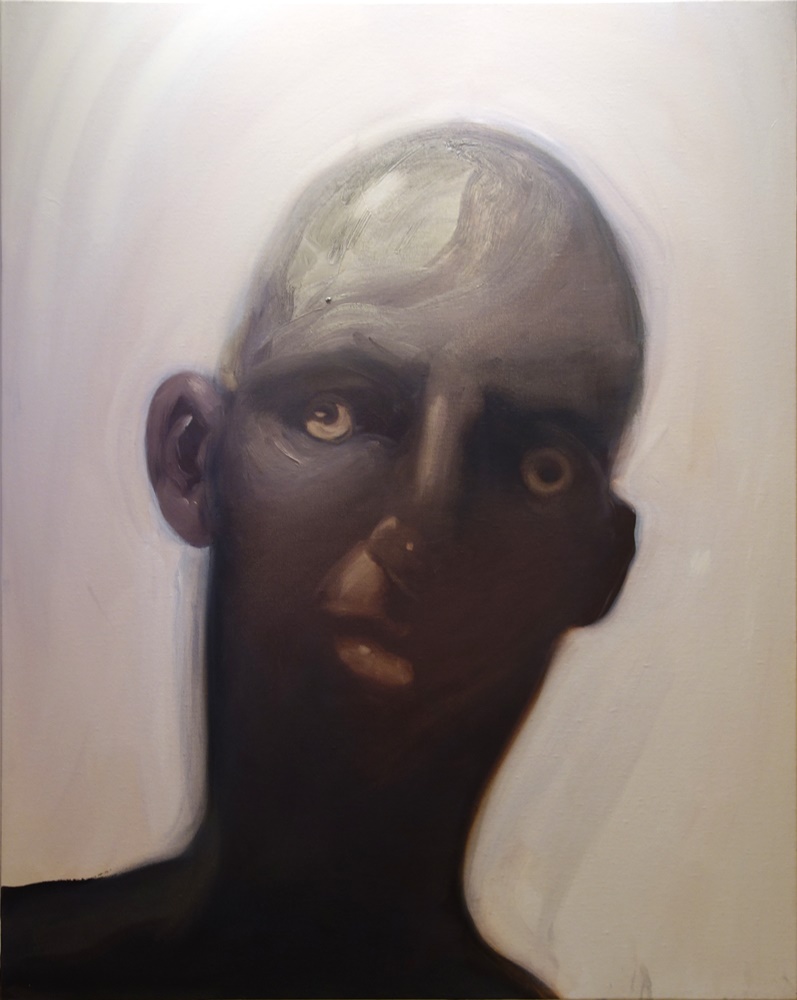Half-Naked
adjective | half • na • ked
being without clothing or covering; nude:
bare of any covering, overlying matter, vegetation, foliage, or the like: naked fields.
bare, stripped, or destitute: The trees were suddenly naked of leaves.
without the customary covering, container, or protection: a naked sword; a naked flame.
without carpets, hangings, or furnishings, as rooms or walls.
unassisted by a microscope, telescope, or other instrument: visible to the naked eye.
Origin of Naked: Middle English Old English
before 900; Middle English naked(e), old English nacod; cognate with Dutch naakt, German nackt, Gothic naqths; akin to Old Norse nakinn, Latin nudus, Greek gymnos, Sanskrit nagnas
About:
Ray Turner’s work presents a duality between a forceful primality in his treatment of material, and a more cerebral retrospection of the range of human emotion that the work holds within. In Turner’s earlier series, the concept of identity was explored through the act of transformation through a...
more >>
Ray Turner’s work presents a duality between a forceful primality in his treatment of material, and a more cerebral retrospection of the range of human emotion that the work holds within. In Turner’s earlier series, the concept of identity was explored through the act of transformation through active participation, in the space between observer and observed as the work became an active channel. In his new work, Turner has put his emphasis on the physicality of the mark making process itself as a means of representation, further breaching the boundaries of the traditional modes of portraiture. JoAnne Artman Gallery is pleased to present Half Naked, a showing of Turner’s most recent paintings and prints focused on exploring the dichotomies behind the idiom “half-naked” that powerfully echoes our own discomfort when confronted with the illusions of safety behind all social constructs through the viscerality of the painting medium. In Half Naked, Turner takes his explorations into the emotive potential of the portrait to the next level, as he presents a group of works that refuse to be categorized by exclusion. From work to work, Turner presents a didactic deconstruction of the visual semantics behind recognizability of form through a parsing of the gray space of the half-formed, half-naked. The representational qualities of the works rely on Turner’s mastery of form and the vast range of human facial expression. Through slightest suggestions, Turner is able to utilize the properties of his medium to create images that capture and attune to emotional states. Created as an organic process of fluid, painterly malleability, the paintings are reminiscent of the dextrous exaggerations of Francis Bacon, the mastery of form and the grotesque of Francisco Goya, and the wide, luscious strokes of John Singer Sargent. The new body of work further explores the concept of identity through materiality and the idea of formation by utilizing materials that emphasize the painting process such as translucent mylar, acetate, vellum, and duralene. Chance, discovery, and intentionality are an integral part of Turner’s working process as he experiments with new elements such as the semi-opaqueness of mylar and duralene - materials he was initially inspired to use through the study of old anatomy illustrations. Assembly and display as part of the presentation process are another important step in Turner’s methodology as a point of visual guidance via juxtaposition. RAY TURNER (b. 1958, Stockton, California) lives and works in Pasadena, California where he earned his BFA from Art Center College of Design. His work has been showcased in exhibits throughout the country as well as in museums and galleries in San Francisco, New York, Miami, Chicago, Boston, and Berlin. Ray Turner’s work will inspire, provoke, engage and mesmerize. With visual perceptions always changing, peek behind the stories told and you're sure to find the right artistic expression!






